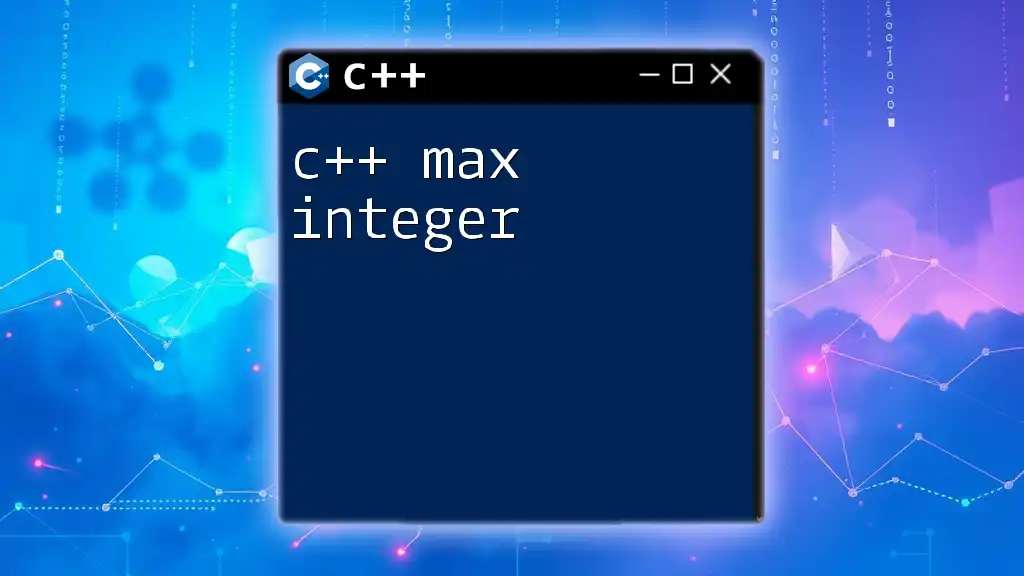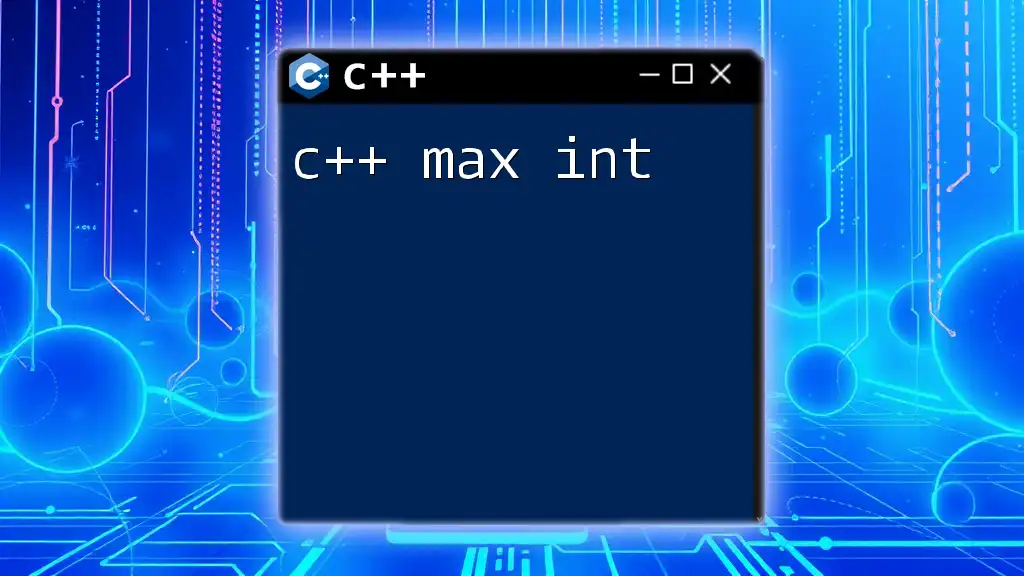`std::atomic<int>` in C++ provides a way to perform atomic operations on integer variables, ensuring thread safety during concurrent access without the need for explicit locks.
#include <atomic>
#include <iostream>
#include <thread>
std::atomic<int> atomicInt(0);
void increment() {
for (int i = 0; i < 1000; ++i) {
atomicInt++;
}
}
int main() {
std::thread t1(increment);
std::thread t2(increment);
t1.join();
t2.join();
std::cout << "Final value of atomicInt: " << atomicInt.load() << std::endl;
return 0;
}
Understanding Atomic Types in C++
What Does "Atomic" Mean?
In programming, atomicity refers to operations that complete in a single step relative to other threads. Simply put, an atomic operation cannot be interrupted, ensuring that no other thread can see it in a partially completed state. This characteristic makes atomic operations crucial in the context of concurrency, where multiple threads may try to read or write shared data simultaneously.
When data modification is not atomic, race conditions can occur, leading to inconsistent or corrupted data states. With atomic types, programmers can manage such situations without locking, thereby enhancing performance.
Overview of `std::atomic`
The C++ Standard Library provides the `std::atomic` template, which allows developers to define atomic types. This feature is essential for creating lock-free programming models that enhance performance and scalability in multithreaded applications. By effectively managing access to shared resources, `std::atomic` ensures that operations remain safe across multiple threads.

C++ Atomic Int: `std::atomic<int>`
What is `std::atomic<int>`?
`std::atomic<int>` is a specialized instantiation of the `std::atomic` template that allows you to create atomic integers. Its primary advantage lies in providing safe concurrent access while eliminating the need for mutual exclusion techniques, such as locks. This is particularly advantageous when high performance and fast responsiveness are required in multi-threading scenarios.
Using `std::atomic<int>`, you can perform operations on integers in a thread-safe manner, ensuring that interventions from other threads do not lead to data inconsistencies.
Basic Usage of `std::atomic<int>`
Declaring and initializing an atomic integer is straightforward. You can create an atomic integer similar to a regular integer but with the added benefits of atomic operations:
std::atomic<int> atomicInt(0);
To read the value of an atomic integer, you can use the `load()` member function:
int value = atomicInt.load();
This function retrieves the current value without modifying it, ensuring that the read is safe and consistent.
Modifying `std::atomic<int>`
Atomic Operations
With `std::atomic<int>`, several atomic operations are available, such as `store`, `fetch_add`, and `fetch_sub`.
Example of `store`:
atomicInt.store(42);
This operation sets the atomic integer to a new value in a thread-safe manner.
Example of `fetch_add`:
int oldValue = atomicInt.fetch_add(5); // increments atomicInt by 5
Here, `fetch_add` increases the value of `atomicInt` by 5 and returns the previous value before the addition.
Example of `fetch_sub`:
int oldValue = atomicInt.fetch_sub(3); // decrements atomicInt by 3
Similarly, `fetch_sub` decreases the atomic integer by 3 and returns its old value.
Comparison and Exchange
Another powerful feature of `std::atomic` is the `compare_exchange_weak` and `compare_exchange_strong` methods. These methods allow you to perform a conditional update to the atomic variable based on its current value.
Example:
int expected = 42;
atomicInt.compare_exchange_strong(expected, 100);
In this case, if `atomicInt` equals `expected` (42), it will be changed to 100. If not, `expected` will be updated with the current actual value of `atomicInt`.

Practical Examples of `std::atomic<int>`
Example 1: Simple Counter
Let’s consider a simple counter implemented using `std::atomic<int>`:
std::atomic<int> counter(0);
void increment() {
for(int i = 0; i < 100; ++i) {
counter.fetch_add(1);
}
}
In this example, the `increment` function safely increases the counter by 1 in a loop without the risk of race conditions.
Example 2: Multithreaded Environment
Using `std::atomic<int>` in a multithreaded application illustrates its effectiveness in ensuring data integrity. Below is a complete example:
#include <thread>
#include <iostream>
#include <atomic>
std::atomic<int> sharedInt(0);
void incrementCounter() {
for (int i = 0; i < 1000; ++i) {
sharedInt.fetch_add(1);
}
}
int main() {
std::thread t1(incrementCounter);
std::thread t2(incrementCounter);
t1.join();
t2.join();
std::cout << "Final sharedInt: " << sharedInt.load() << std::endl;
return 0;
}
In this sample, two threads simultaneously increment a shared atomic integer. Thanks to `std::atomic`, there’s no need for explicit synchronization, as the atomic type ensures the operations are carried out safely.

Performance Considerations
When to Use `std::atomic<int>`
`std::atomic<int>` shines in situations where performance is critical and contention is low. Implementing atomic types is not only efficient but can also lead to more elegant and maintainable code. By avoiding mutexes, you can reduce lock contention and improve performance in high-throughput applications.
Limitations of `std::atomic<int>`
While `std::atomic<int>` is advantageous in many scenarios, it is not without its limitations. Atomic operations can introduce a certain level of overhead, particularly with complex data types or extensive operations. In some cases, using `std::atomic` may not yield the desired performance benefits when compared to mutexes, especially in situations involving complex interdependencies between shared data.

Conclusion
Using C++ atomic int, specifically through the `std::atomic<int>` implementation, provides a robust solution for managing concurrent access to shared data. By ensuring atomicity in operations, developers can significantly reduce the risk of race conditions while maintaining high performance. For those looking to master concurrency in C++, delving deeper into `std::atomic` and its various forms will be beneficial.

Call to Action
Now that you understand the fundamentals and practical applications of `std::atomic<int>`, consider implementing it in your projects. As you explore this powerful tool, don't hesitate to share your experiences or ask questions as you deepen your knowledge in C++ concurrency.

















